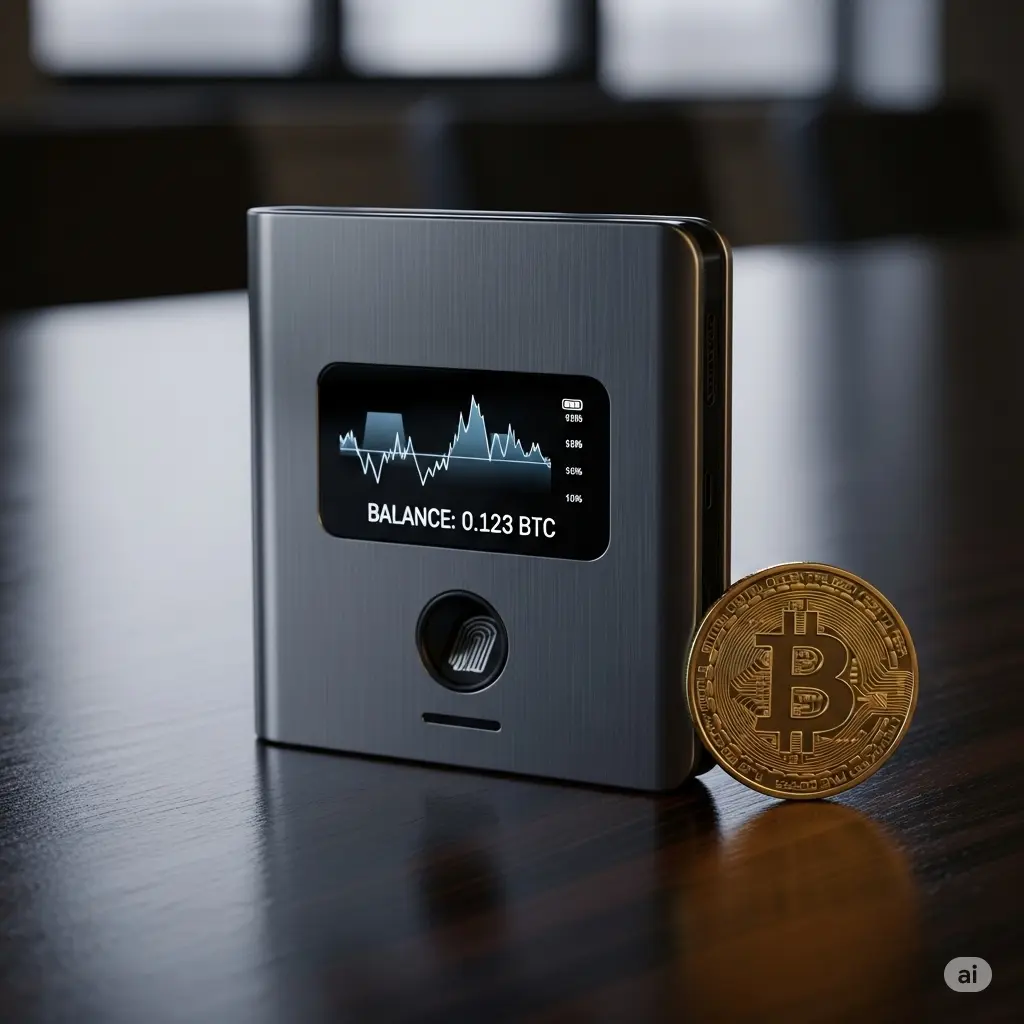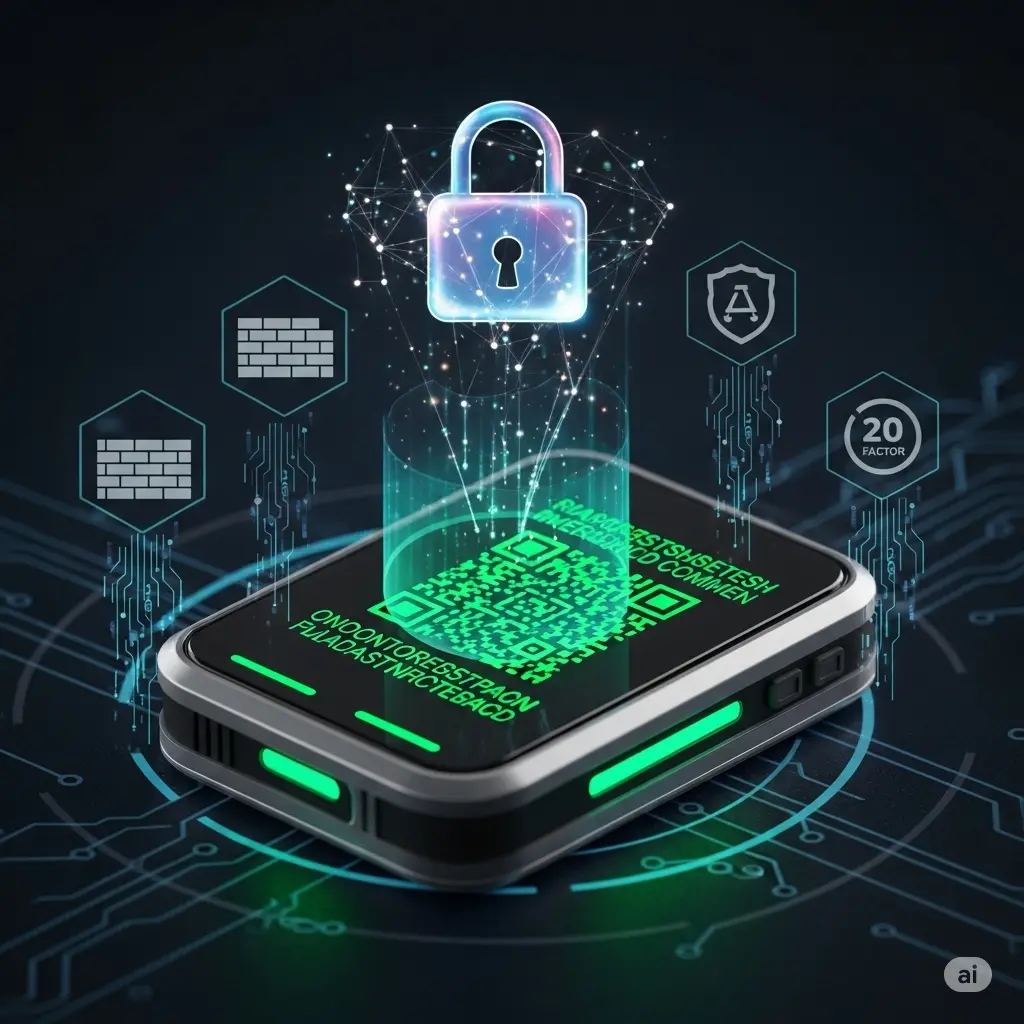New‑Age Secure Crypto Wallet with Revolutionary Safety Features
Are you ready for the next leap in cryptocurrency security? The Secure Crypto Wallet offers revolutionary safety features built for today’s digital asset world. This article explains what makes this secure crypto wallet so important now. It explores threats in DeFi, Web3, hot wallets, cold wallets, hardware wallets, mobile wallets, and decentralized wallets. It also helps beginners and intermediate crypto investors use the best crypto wallet 2025 safely.
Why is this suddenly a top topic? Crypto hacks, phishing, and rug pulls are more frequent than ever. Investors need better tools to protect funds. That’s where a secure crypto wallet with new safety layers steps in. It offers trust, resilience, and peace of mind. Global Crypto Sports readers love staying ahead. You’ll learn key terms, compare wallet types, see examples, weigh pros and cons, and get actionable advice.
Let’s dive in and explore the world of next‑generation crypto wallets and how they can secure the future.

Understanding Key Crypto Terms
Before exploring the wallet, let’s define some core terms clearly and simply.
What is Blockchain?
Blockchain is a secure digital ledger. Each block holds transaction data. It links cryptographically. It’s tamper‑resistant. It powers cryptocurrencies like Bitcoin and Ethereum.
What is DeFi?
DeFi stands for decentralized finance. It refers to financial services without intermediaries. Users lend, borrow, and trade via smart contracts. DeFi apps often require wallets to access assets.
What is Web3?
Web3 means the third generation of the web. It focuses on decentralization and user control. Web3 relies on blockchain, tokens, and crypto wallets to manage digital identity and value.
What is a Crypto Wallet?
A crypto wallet stores public and private keys. It allows you to send, receive, and monitor crypto. Wallet types include:
- Hot wallet – Connected to the internet.
- Cold wallet – Offline or hardware‑based.
- Hardware wallet – A Physical device for safe key storage.
- Mobile wallet – App on phone.
- Decentralized wallet – Non‑custodial, no third-party controls funds.
Understanding these will help you appreciate the features of the new‑age secure crypto wallet.
Why A Secure Crypto Wallet Now?
Rising Crypto Wallet Security Concerns
Crypto theft and hacks rose sharply in recent years. Many losses came from compromised hot wallets. Mobile wallet malware, phishing attacks, and smart contract bugs all threaten investor funds. A secure crypto wallet with revolutionary safety features can reduce those risks.
Regulatory Attention and Investor Awareness
Regulators, institutional investors, and mainstream users now focus on security and transparency. Crypto wallets must evolve to meet higher standards. This wallet appeals to users wanting robust defense against emerging threats.
Adoption of DeFi, NFTs, Web3
More people use DeFi protocols, NFTs, and Web3 apps. That increases the need for wallets that combine convenience with strong security. The new‑age secure crypto wallet does just that—giving users fast access with more safety.
Exploring the Secure Crypto Wallet
Let’s break down its defining traits and features.
Revolutionary Safety Features
- Multi‑factor authentication (MFA) with biometrics
Combines PIN, password, fingerprint, or facial scan to unlock the wallet. - Air‑gapped transaction signing
Signs transactions on a device physically isolated from the internet. - Secure enclave hardware
Stores private keys in a dedicated tamper‑resistant chip. - Self‑destruct private key backup
Automatically erases backup if tampering is detected. - Encrypted cloud backup with zero‑knowledge proof
Allows recovery but the cloud provider cannot see sensitive data. - Transaction whitelisting
Only pre‑approved addresses can receive funds. - On‑device smart contract verification
Scans DeFi contracts for known risk patterns before execution.
Each of these features adds layered protection, giving users confidence. The wallet spans stability, privacy, and defense.
Types of Wallets Compared
Let’s see how this secure crypto wallet stacks up against classic types.
| Wallet Type | Internet Connection | Security Level | Convenience |
|---|---|---|---|
| Hot wallet | Yes | Low | Very high |
| Cold wallet | No | High | Low to medium |
| Hardware wallet | Minimal (via USB) | Very high | Medium |
| Mobile wallet | Yes | Medium to low | Very high |
| New‑age secure wallet | Air‑gapped + optional connection | Highest | Medium to high |
The combination of hardware security with smart software features sets the new wallet apart.
Real‑World Examples and Case Studies

Case Study: Recovering Funds After Phishing
A Global Crypto Sports reader lost funds in a phishing scam because a standard hot wallet auto‑approved a malicious contract. After switching to the secure crypto wallet, its on‑device smart contract verification blocked the same phishing link. They stopped the loss.
Example: DeFi User Escapes Rug Pull
A DeFi user connected a hot wallet to a suspicious yield farm. The transaction passed. But the new wallet blocked it via transaction whitelisting and contract checks. The user logged on Global Crypto Sports forums to warn others.
Benefits of the Secure Crypto Wallet
Using our focus and secondary keywords, here are the key advantages clearly:
- Best crypto wallet 2025 candidate due to unmatched protection.
- Combines cold wallet hardware integrity and hot wallet convenience.
- Superior crypto wallet security with MFA, secure enclave, whitelists, and backups.
- Supports all wallet types: hardware wallet, mobile wallet, and decentralized wallet.
- Backup is safe and private, even in the cloud.
- Beginner‑friendly while protecting advanced DeFi and Web3 use.
- Helps users feel secure using the best crypto wallet 2025 with confidence.
- Enhances decentralized wallet usage without sacrificing convenience.
- Frees users from fear of hacks or smart contract risks.
- Offers a modern upgrade path from existing cold wallets or hot wallets.
Potential Risks and Cons
Even the best tools have limitations. Let’s be clear:
Complexity for Beginners
- Learning MFA, air‑gap, and whitelisting may feel complex for new users.
- Initial setup might take longer than classic cold or hot wallets.
Cost and Accessibility
- The wallet might cost more than basic hardware wallets.
- Availability may be limited regionally at launch.
Dependency on Device Integrity
- If a user’s device is compromised before wallet setup, risk remains.
- Physical theft of the device still poses a threat unless biometrics protect it.
Backup Recovery Edge Cases
- Self‑destruct backup may erase keys if mishandled network signals trigger false alarms.
- Users need to follow clear backup procedures and secure recovery phrases.
Being aware of these cons helps mitigate them proactively.
Actionable Advice for Beginners and Intermediate Crypto Investors
Whether new or experienced, here’s how to adopt this wallet smoothly:
For Beginners
- Start small. Transfer a small test amount first.
- Read instructions thoroughly. Understand MFA, air‑gap steps, and backup flow.
- Practice recovery on offline backup recovery before using large amounts.
- Enable transaction whitelisting with trusted addresses like exchanges you use.
- Keep firmware updated to benefit from security patches.
For Intermediate Investors
- Define whitelisted DeFi contracts only after smart contract audits.
- Use a layered approach: Keep most funds in cold storage, and daily trading on a new wallet.
- Monitor on‑device contract scanning results closely.
- Use an encrypted cloud backup when traveling. Ensure offline physical backup in a secure location.
- Regularly export wallet logs to spot unusual activity early.
Frequently Asked Questions (FAQ)
Here are 6 common questions readers often ask.
1. What makes this a secure crypto wallet compared to others?
This wallet layers multi‑factor auth, secure hardware, whitelisting, and contract checks. That gives much stronger protection than standard wallets.
2. Is this the best crypto wallet 2025 for everyone?
It’s superb for security‑focused users, DeFi and Web3 users, and those handling large crypto. But beginners on tight budgets may choose basic hardware wallets.
3. Is it a cold wallet or a hot wallet?
It blends both: cold storage when air‑gapped, hot functionality when online. This hybrid gives flexibility with enhanced crypto wallet security.
4. Can I use it as a mobile wallet?
Yes. It supports connection to a mobile wallet interface. It secures keys offline and only signs via a secure channel.
5. How safe are backups?
Backups use encrypted cloud storage with zero‑knowledge encryption. You control the cipher keys. Even the provider cannot decrypt.
6. What if I lose my device?
You can restore using your encrypted cloud backup plus your recovery phrase. Self‑destruct backup counters tampering.
7. Does it support decentralized wallet features?
Yes. It’s non‑custodial, supports Web3 DApps, and interacts with DeFi platforms securely without intermediaries.
Summary Table – About Secure Crypto Wallet
| Feature | Description |
|---|---|
| Security Layers | MFA, secure enclave, whitelists, contract scanning, backups |
| Hybrid Wallet | Cold‑like safety, hot‑like flexibility |
| Target Users | DeFi, Web3, security conscious, long‑term investors |
| Pros | Excellent crypto wallet security, best crypto wallet 2025? |
| Cons | Complexity, cost, setup learning curve |
| Backup Method | Encrypted cloud backup, local phrase, tamper‑detect self‑destruct |
| Device Risk Mitigation | Biometrics, whitelisting, air‑gapped signing |
| Real‑World Use Cases | Phishing block, rug‑pull prevention |
Why Global Crypto Sports Readers Should Care
- You get early insights into futuristic wallet designs.
- It helps you advise fellow readers on the best crypto wallet 2025 options.
- DeFi and Web3 users follow your updates. This wallet can prevent major loss stories.
- You cover both basics and advanced safety for growing crypto audiences.
How to Write Your Comparison on Global Crypto Sports
If you promote this wallet on your site:
- Start with a quick test walkthrough video.
- Interview developers or security researchers.
- Compare with Trezor, Ledger, MetaMask, and Trust Wallet.
- Use case studies and quotes from early adopters.
- Link to reputable audit reports and firmware logs.
- Keep sentences short, bullets crisp, keywords bolded.
What You Can Do Today
- Research vendor releases of the New‑Age Secure Crypto Wallet.
- Order or trial the device for hands‑on review.
- Draft a demo guide comparing it with Ledger Nano X, Trezor Model T.
- Test its MFA, contract scanning, and air‑gap signing features.
- Share honest pros and cons based on your testing.
- Invite readers to comment on their security priorities.
- Use “Global Crypto Sports” branding with SEO keywords in your headings and meta.
Conclusion and Call‑to‑Action
A secure crypto wallet is a tool that safely stores your crypto by protecting your private keys with encryption, offline storage, and backup features. It blends the safety of a cold wallet, the accessibility of a hot wallet, and cutting‑edge features like biometrics, transaction whitelisting, contract scanning, and encrypted backups. For Global Crypto Sports readers, this innovation could mean fewer hacks, more confidence, and a smoother journey into DeFi and Web3.
What should you do next? Stay updated with Global Crypto Sports coverage of wallet reviews. Try the best crypto wallet 2025 candidate when it’s available. Prioritize crypto wallet security in your journey.
Share this article to help others choose smarter wallet solutions. Comment below or join your favorite crypto forums to ask how to set up the wallet step by step.
Invest wisely. Protect your keys. Embrace secure crypto wallets for a safer journey ahead.
